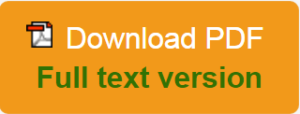Authors :
Jenitha Karthiga S; Roshini A; Varshika J J
Volume/Issue :
Volume 10 - 2025, Issue 2 - February
Google Scholar :
https://tinyurl.com/z655the5
DOI :
https://doi.org/10.38124/ijisrt/25feb267
Note : A published paper may take 4-5 working days from the publication date to appear in PlumX Metrics, Semantic Scholar, and ResearchGate.
Abstract :
Work-life balance (WLB) is a vital determinant influencing employee quality of life, productivity, and
organizational success. This study assesses the impact of WLB on employee well-being using a survey-based approach. Data
was collected from a diverse pool of employees across various industries in India, analyzing factors such as work hours, job
stress, personal life satisfaction, and mental health. The findings emphasize the necessity of achieving a harmonious
integration between work and personal life to foster employee wellness and overall job fulfillment. A well-maintained WLB
leads to increased job satisfaction, reduced stress levels, and improved physical and psychological well-being. The study
suggests that organizations should implement policies that support WLB to enhance employee performance and overall
workplace morale. Keywords: Work-Life Balance, Employee Wellness, Job Fulfillment.
Keywords :
Work-Life Harmony, Employee Wellness, Organizational Productivity.
References :
- FUGLESTAD, S., & HERJE, M. V. A. (2023). The influence of work life balance on employee well-being: The mediating roles of job satisfaction and burnout/stress (Master's thesis, uis).
- Na, J., & Chelliah, S. (2024). The impact of work-life balance (WLB) on employee health: The mediating role of culture. Global Business & Management Research, 16.
- Raffi, J., Trivedi, M. K., White, L., & Murase, J. E. (2020). Work–life balance among female dermatologists. International Journal of Women's Dermatology, 6(1), 13-19.
- Dunn, P. M., Arnetz, B. B., Christensen, J. F., & Homer, L. (2007). Meeting the imperative to improve physician well-being: assessment of an innovative program. Journal of general internal medicine, 22, 1544-1552.
- Gulzar, S., Ayub, N., & Abbas, Z. (2021). Examining the mediating-moderating role of psychological contract breach and abusive supervision on employee well-being in banking sector. Cogent Business & Management, 8(1), 1959007.
- Lester, W. (2024). Work-Life Balance. Nephrology Nursing Journal, 51(3).
- R. Helmle, J., C. Botero, I., & R. Seibold, D. (2014). Factors that influence perceptions of work-life balance in owners of copreneurial firms. Journal of Family Business Management, 4(2), 110-132.
- Smith, K. T. (2010). Work-life balance perspectives of marketing professionals in generation Y. Services Marketing Quarterly, 31(4), 434-447.
- Gawlik, R., & Jacobsen, G. (2016). Work-life balance decision-making of Norwegian students: implications for human resources management. Entrepreneurial Business and Economics Review, 4(4), 153.
- Rosenberg, A. R., Weaver, M. S., Fry, A., & Wiener, L. (2021). Exploring the impact of the coronavirus pandemic on pediatric palliative care clinician personal and professional well-being: a qualitative analysis of US survey data. Journal of pain and symptom management, 61(4), 805-811.
Work-life balance (WLB) is a vital determinant influencing employee quality of life, productivity, and
organizational success. This study assesses the impact of WLB on employee well-being using a survey-based approach. Data
was collected from a diverse pool of employees across various industries in India, analyzing factors such as work hours, job
stress, personal life satisfaction, and mental health. The findings emphasize the necessity of achieving a harmonious
integration between work and personal life to foster employee wellness and overall job fulfillment. A well-maintained WLB
leads to increased job satisfaction, reduced stress levels, and improved physical and psychological well-being. The study
suggests that organizations should implement policies that support WLB to enhance employee performance and overall
workplace morale. Keywords: Work-Life Balance, Employee Wellness, Job Fulfillment.
Keywords :
Work-Life Harmony, Employee Wellness, Organizational Productivity.

